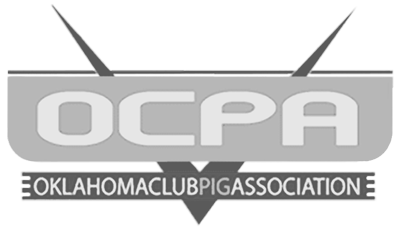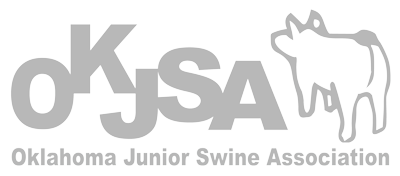EXISS TRAILER USE & MAINTENANCE
Below you'll find a listing of information and tips for trailer use and maintenance on your Exiss trailer. The information below is provided as a convenience to trailer owners and should not be used in lieu of your owner’s manual. Please refer to your Exiss owner’s manual or contact Exiss at 877-553-9477 with any specific questions that you may have.
Distribution of Load
There are three aspects to proper loading:
- The trailer should sit as close to level as possible when loaded to allow for even weight distribution to the axles. Use a drop hitch on bumper pull trailers or adjust the gooseneck coupler.
- Distribute the load to ensure proper tongue weight. Since most horses do not weigh the same, the heavier horse should be put in front, so tongue weight stays over 10 percent of total weight.
- Know the trailer’s capacity. Do not overload the trailer. A typical 3-horse trailer will safely hold three large horses and a reasonable amount of tack.
Tongue weight is a determining factor in trailer handling. Too little tongue weight causes sway or hitch disengagement from the ball. Too much tongue weight may exceed guidelines set out by the manufacturer of the tow vehicle and cause steering or suspension problems. A general guideline is that for bumper pull trailers, tongue weights should be 10-15 percent of trailer weight. Tongue weights less than 10 percent of trailer weight can cause stability problems. For goosenecks, tongue weight should be approximately 25 percent of trailer weight.
Tow Vehicle
It is important to tow your Exiss trailer using a vehicle equipped with both adequate power and the correct hitch size. Please see your dealer for the correct hitch for your tow vehicle, as suggested by the hitch manufacturer.
Exiss horse trailers and stock trailers require a pickup truck of sufficient towing capacity for the actual weight or a special tow vehicle. If you plan to use a truck you already own for towing your Exiss trailer, you should check with your automotive dealer who may be able to answer your questions or assist you with this.
If you are planning to purchase a new tow vehicle, consult your automobile manufacturer for recommendations regarding special equipment available for trailer towing.
Speed and Driving
Use extreme caution when pulling your Exiss trailer. Do not exceed the posted speed limits on the roads you are traveling. Be aware that traveling at higher speeds or hauling heavier loads will increase your stopping distance.
The most common trailer repairs stem from people forgetting they are pulling a trailer. It is easy to damage a nose sheet or vehicle by turning too sharply. It is also easy to damage running boards and fenders if you forget how wide your trailer is. You should also be aware of your turning radius to avoid clipping objects or damaging fenders and tires while turning. Position mirrors so that you have good visibility of the area around and behind the trailer.
While you should always check your brakes for proper function before a trip, a good rule of thumb is to drive as if you do not have trailer brakes. For your animals’ safety, brake gradually and navigate turns as smoothly as possible.
Temperature
Remember the inside of a trailer can get extremely hot in a short period of time. Darker colors get hot faster, but even white-skinned aluminum trailers can get hot when parked in direct sunlight. Be sure to keep windows open and create cross-ventilation in summer months, especially when stopped. If you do not have nylon or aluminum face guards for drop-down windows, it is not recommended to travel with drop-down windows open in order to keep your animal’s head inside the trailer.
Ventilation is important even when hauling in the winter months. Especially in trailers that are not fully insulated, moisture can build up inside the trailer and condense on the walls or floors where it freezes.
It is not recommended that you store saddles and tack in your trailer for long periods of time. Moisture and/or intense heat may damage your equipment.
Securing your Load
Gate and/or tie your livestock or cargo as tightly as possible. Livestock, horses or cargo shifting in the trailer may cause the driver to lose control and could lead to an accident. Consider stud dividers or full partitions for animals that are more likely to kick or be unruly while in your trailer.
Loading and Unloading Your Horses
Use caution when loading or unloading your trailer. Be sure to keep small children away during your loading or unloading process. Horses tend to have their personal preferences of loading and unloading, such as ramps vs. step-ups, back out vs. turning around in slant load and coming out forward. Become familiar with your animals, or ask previous owners those types of questions. Carelessness may cause injury or death to your animals or you.
Repair Supplies
Listed below are several recommended repair supplies you should have with you when pulling your trailer:
- Jack—Hydraulic jack of sufficient size or a ramp jack (Jiffy Jack) to raise the trailer if necessary
- Jumper Cables—Your battery is apt to run down if you accidentally leave a trailer light on
- Replacement Fuses—Fuses are a small item that can save a big headache in the event you have a short or overload your vehicle’s electrical system
- Flashlight
- Ball Grease
- Electrical and Duct Tape
- Spare Tire and Tire Iron—Flats happen at the least opportune time, so be prepared
- Tool Kit—This should include at least a Philips and flat screwdriver and an adjustable wrench, vise-grips or pliers. It may also be handy to include a small socket set and wrenches. Keep tools in a toolbox or bag for easy loading and preventing damage to the interior of your trailer from lose objects
- Tire Pressure Gauge
- Flares, or Emergency Hazard Markers
Trailer Tires
A daily check of the air pressure in your tires is essential. The PSI is located on the sidewall of each tire. It is wise to not mix types of tires, e.g., don’t use both radials and bias-ply tires.
Rotating Tires
Tires should be rotated side to side and front to rear every 5,000 to 7,000 miles to ensure maximum tire mileage and even wear.
Fasteners
There are several types of fasteners on each trailer. All fasteners such as huck bolts, rivets, axle bolts and bolts on the bumper pull hitch section should be checked several times when first using the trailer, then periodically thereafter. Lug nuts on wheels should be checked as well, as described in the axle manufacturer operator’s manual.
Hinges and Pivot Points
Periodically lubricate any area with moving parts. Grease axle hubs according to manufacturer’s recommendations. Spray hinges, jacks, latches and other moving parts with a lithium lubricant, or coat them with grease to provide better service over a long period of time.
Bumper Hitch and Ball
The ball assembly and the coupler in a bumper pull hitch should be lubricated monthly or when dry with automotive grease. Use approximately a tablespoon of grease in the coupler and connect the ball to spread thoroughly. While lubricating, the locking mechanism, coupler and ball should be inspected for any abnormal wear. Check the tightness of the nut on the threaded shaft of the hitch ball.
Gooseneck Hitch and Ball
The ball assembly and the gooseneck hitch coupler should be lubricated monthly. Use approximately a tablespoon of grease in the coupler and connect the ball to spread thoroughly. While lubricating, the locking mechanism and the gooseneck hitch coupler should be inspected for any abnormal wear.
Spring-Loaded Drop Leg Jack
To lubricate the gears in the drop leg jack, remove the top cap of the jack and pump lubricant into the gears. This should be done annually.
Breakaway Battery
A single breakaway battery is supplied with every Exiss trailer. In a bumper pull trailer, the battery is located behind the hitch coupler; in a gooseneck trailer, the battery is located at the top of the gooseneck hitch where the wire comes out. Check the charge of the battery weekly. You can easily do this by hitching your trailer to your tow vehicle without connecting the electrical plug, then pull the breakaway cord out of the switch box and pull the trailer forward slowly; the wheels should be locked. To unlock the trailer tires, snap the breakaway plug back into the switch box. If the battery installed for your electric breakaway switch is not properly maintained or replaced as necessary, the breakaway switch may fail to properly activate the trailer brakes should the trailer and towing vehicle separate. The battery should be charged and tested at least annually. Normal service life is approximately two years.
Cleaning and Care
You can use a regular, non-abrasive car wash product to wash your trailer as needed. It is recommended that you use a soft rag or brush to avoid scratching the finish of the skin. The scratches won’t hurt the skin but can affect the trailer’s appearance, similar to an automobile. Be sure to wash the interior and underneath of your trailer to remove road salts and animal by-products, as well as the car wash products. It is suggested that you utilize a high quality automotive wax on the painted skin twice a year, possibly more on the red and black models.
Trailer Floor Cleaning
Raise the front of the trailer to ensure proper drainage. We recommend washing the floor with a power washer at least once every three months. If the trailer has rubber mats, remove them before washing the floor. Be sure that the floor has dried completely before reinstalling any mats. Before reinstalling the floor mats, you may want to treat the dry floor with an anti-acidic to reduce the effect of urine between cleaning. Baking soda is a readily available anti-acidic agent.




